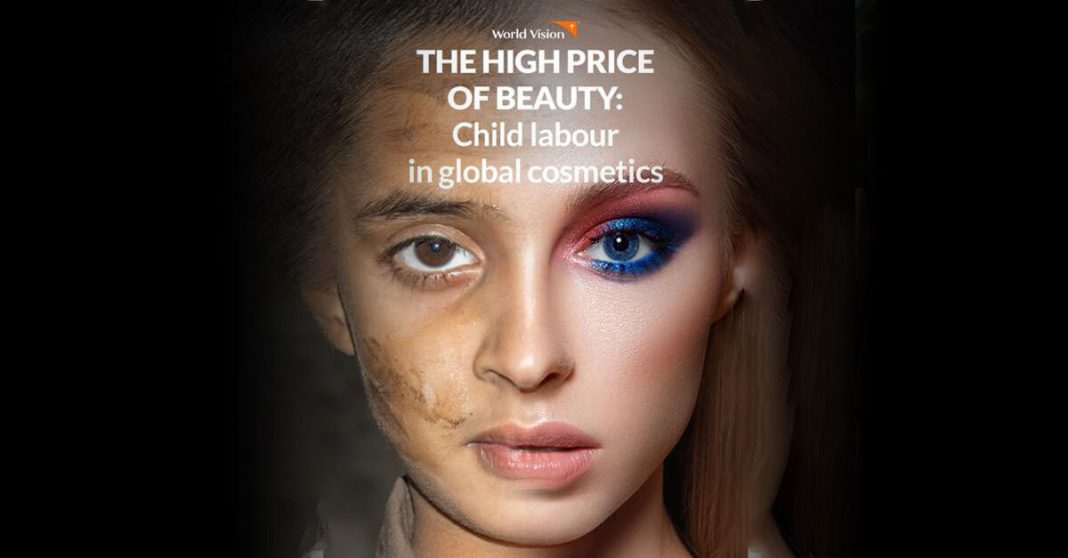International aid agency World Vision has warned that most glossy beauty products are likely to contain ingredients gathered by children in mines and on farms in low-income countries.
Cruelty-free products may not involve animal testing, but they are likely to include ingredients procured from child labor, according to World Vision’s latest report, ‘The High Price of Beauty.”
After decades of progress, the number of child laborers who work to support their families or have been trafficked, forced, or coerced to work has been increasing since 2016 worldwide. The child-focused NGO is today calling on supporters to lobby their governments and beauty companies for improved traceability and supply chain legislation so that no child is giving up their childhood for dangerous mining or agricultural work.
Unless companies rigorously vet their supply chains and governments expand social safety nets and school enrolment, it is likely that 140 million children will still be in child labor in 2025. The suffering of children continues while cosmetic companies continue to profit.
Supply chains for mined and agricultural products often need to be clearer and easier to trace, as products are imported and re-exported from multiple countries in different stages of the refinement process. Middlemen and large multinational cosmetic companies are profiting while children pay the price.
An estimated 30 percent of ingredients in cosmetics are derived from either mined or agricultural commodities, and the growth of the natural beauty industry has seen an increased demand in agricultural inputs. World Vision believes that cosmetics buyers are in a position to pressure companies to procure responsibly and thereby help address the root causes of child labor.
“In illegal mines in India and Congo, children are dying in collapsed mine shafts while digging for minerals to help us sparkle or delay aging. The convoluted nature of global supply chains means families aren’t earning enough to keep their children in school and out of work. While the demand and cosmetic companies’ profits are increasing, so is the risk of child labor. This is not a zero-sum game.
This is a world where the number of vulnerable children increased dramatically. The protective systems around children have become so frail, and there is an urgent need for immediate improvement of supply chain systems for cosmetic ingredients in order to make a life of difference for millions.
It’s a shared responsibility, and we’re calling on companies to introduce total traceability and reduce their reliance on intermediaries. Turning a blind eye to the reality of where some of their ingredients have come from will not erase the consequences,” said Daniela Buzducea, Partnership Lead for Advocacy and External Engagement at World Vision.
The World Vision report reviewed the policies of the seven largest beauty companies in 2018 and again in 2022. This investigation saw progress in the documentation of supplier standards, training, availability of hotlines, and audits.
However, the same period also saw massive increases in children working to gather ingredients used in cosmetics such as cocoa, copper, mica, and vanilla.
“Improved supply chain legislation has helped improve the practices of companies on paper in recent years, but we’re still waiting to see that translate into change on the ground. Child labor levels are increasing. The price of profit is their future. We urge consumers to ask governments and the companies they buy cosmetics from to act before another child misses out on an education, a childhood – or worse, their life – to mine or farm beauty product ingredients.” said Ms. Buzducea.
In Laos, the cosmetics market has been steadily growing since 2020, reaching approximately USD 50 million in 2023, and is projected to grow by 16 percent in the coming five years.



